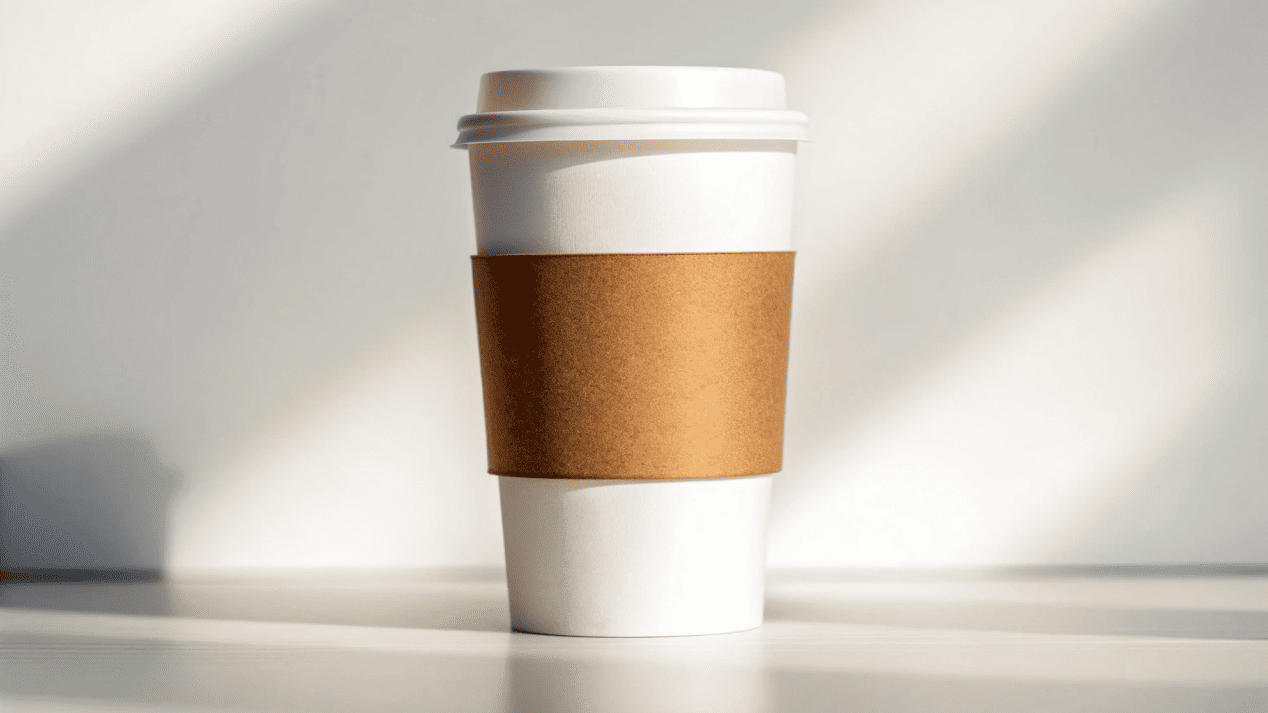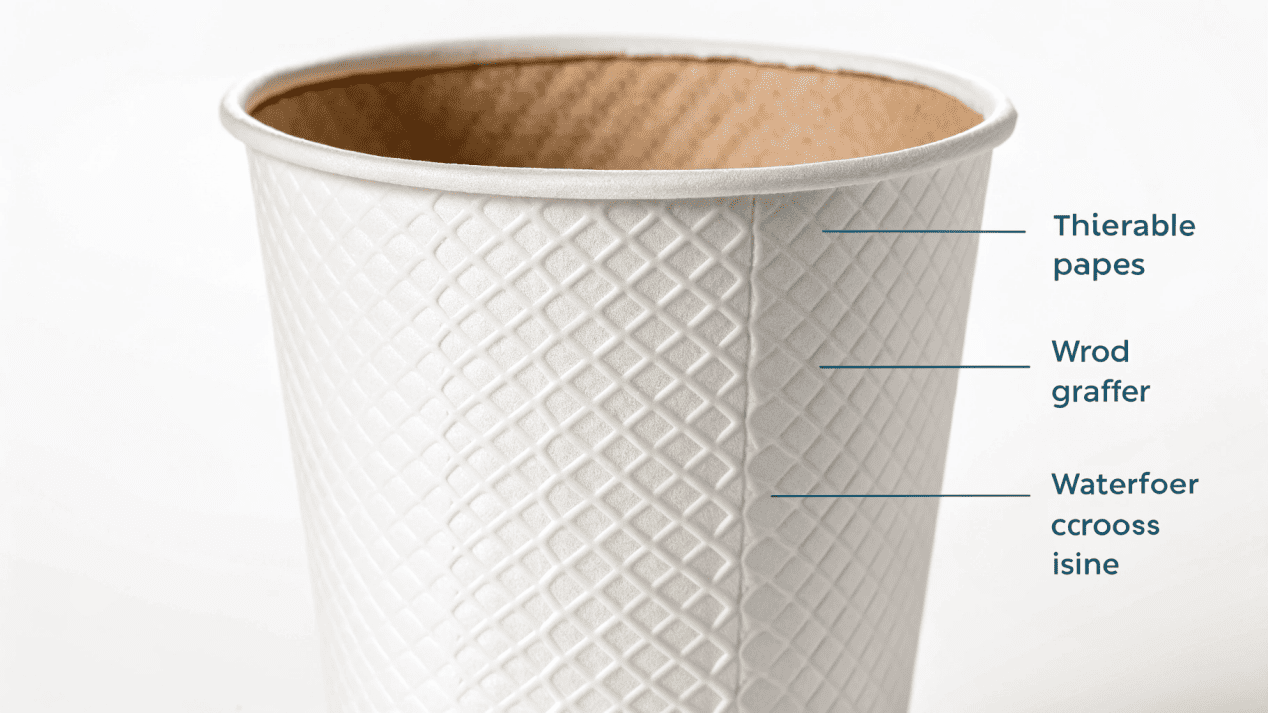Choosing the wrong hot cup burns your customers' hands or your budget. This mistake can damage your brand's reputation and make your quality coffee feel cheap. Let's fix that.
The main types of paper cups for hot drinks are single wall and double wall. Single wall cups are economical but require a sleeve. Double wall cups have built-in insulation, offering a premium experience without a sleeve.

I remember a client who ran a high-volume cafe. He wanted to save money, so he bought single wall cups but decided against ordering cardboard sleeves to cut costs even further. Within a week, he was flooded with complaints from customers saying the coffee was too hot to hold. He quickly learned that the cup is about more than just holding a liquid; it's a critical part of the customer's safety and experience. Let's break down the options so you don't make the same mistake.
What Is a Single Wall Cup and When Should You Use It?
You need to keep your costs low. But handing a customer a flimsy cup that gets scalding hot feels cheap and can be dangerous, forcing you to deal with complaints.
A single wall cup is the most basic, cost-effective option, made from one layer of paperboard. It offers minimal insulation and should be used with a cardboard sleeve for hot beverages.

The single wall cup is the workhorse of the beverage industry. It's simple, lightweight, and the most affordable cup to produce. As the name suggests, it's made from just a single layer of paperboard. Because of this simple construction, heat from a hot drink like coffee or tea transfers directly through the paper. If you pour a boiling hot beverage into it, the outside of the cup will become too hot to hold comfortably within seconds. This is where the cardboard sleeve, or "coffee jacket," becomes essential. The sleeve acts as a second, insulating layer that you add manually.
For my clients, I frame it this way: you aren't just buying a cup; you're buying a two-part system. It's the right choice under specific circumstances.
When to Choose Single Wall Cups
- For Maximum Economy: If budget is your absolute top priority, this is your best option. Even with the added cost of sleeves, the combined price is often lower than a double wall cup.
- For High-Volume Environments: Fast-food restaurants, large event caterers, and office breakrooms that go through thousands of cups a day benefit from the low unit cost.
- For Drinks That Aren't Scalding: If you're serving drinks like warm cider or hot chocolate that aren't at boiling temperatures, a single wall cup can sometimes be sufficient on its own.
However, remember to factor in the hidden costs: you have to store and manage two separate inventory items (cups and sleeves), and your staff has to spend extra time sleeving each cup.
How Does a Double Wall Cup Improve the Customer Experience?
You're tired of managing separate sleeves. They're an extra inventory item to track and an extra step for your staff during a rush, and they can sometimes slide off the cup.
A double wall cup offers a one-piece solution. Its two-layer construction with an air gap provides excellent insulation, making it comfortable to hold while keeping the drink hotter for longer.

From an engineering standpoint, the double wall cup is a much more elegant solution. I often describe it as a "cup-within-a-cup." It has a standard inner cup and then a second layer of paperboard is wrapped around the outside. This creates a small, sealed pocket of air between the two layers. This trapped air is a fantastic insulator. It dramatically slows the transfer of heat, so the coffee stays hot inside while the outside of the cup remains cool and comfortable to the touch. This eliminates the need for a sleeve completely. It’s an all-in-one, premium package.
A popular variation is the ripple wall cup, which is a type of double wall cup with a corrugated outer layer for even better insulation and a non-slip grip.
| Benefit | Single Wall Cup (with Sleeve) | Double Wall Cup |
|---|---|---|
| Convenience | Two pieces, requires assembly | One piece, grab-and-go |
| Feel & Quality | Feels standard, sleeve can slip | Feels sturdy and premium |
| Branding | Limited to cup or sleeve | Full, smooth surface for branding |
| Insulation | Good (with sleeve) | Excellent |
Choosing a double wall cup tells your customer that you’ve invested in their comfort and experience.
PE vs PLA: What's the Difference in Cup Linings?
You know about the cup's structure, but the inside matters too. All paper cups have a waterproof lining to stop them from getting soggy, but the type of lining can affect your brand's eco-friendly reputation.
All paper cups have a lining. PE is the traditional, durable petroleum-based plastic. PLA is the modern, eco-friendly alternative made from plant-based resources like cornstarch, which is commercially compostable.

This is a detail many people overlook, but as a manufacturer, I know the lining is critical. Without it, a paper cup would leak in minutes. The choice of lining material is a major decision that impacts performance and sustainability.
PE (Polyethylene) Lining: The Industry Standard
This is the classic lining you'll find in most paper cups. It's a very thin layer of plastic (polyethylene) bonded to the paper.
- Pros: It's an extremely effective moisture barrier, very durable, and handles high temperatures without any issues. It's also typically the more affordable option.
- Cons: It's made from petroleum, a non-renewable resource. It also makes recycling difficult, because the plastic lining must be separated from the paper fibers in a specialized facility, which is not widely available.
PLA (Polylactic Acid) Lining: The Eco-Friendly Choice
PLA is a bioplastic. Instead of being made from oil, it's made from renewable, plant-based resources like corn starch or sugar cane.
- Pros: It's a much more sustainable option. Cups with a PLA lining are commercially compostable, meaning they can break down into organic matter under the right conditions. This is a powerful message for environmentally conscious brands.
- Cons: It can be slightly more expensive. It also requires access to commercial composting facilities to be disposed of properly; it won't break down in a landfill.
| Feature | PE (Polyethylene) Lining | PLA (Polylactic Acid) Lining |
|---|---|---|
| Source | Petroleum-based (Fossil Fuels) | Plant-based (Renewable) |
| End-of-Life | Landfill (Difficult to Recycle) | Commercially Compostable |
| Cost | More Affordable | Slightly More Expensive |
| Brand Message | Traditional, Performance-focused | Modern, Sustainability-focused |
Conclusion
Your choice reflects your priorities. Single wall cups are for maximum economy, while double wall cups provide a premium feel and superior insulation directly out of the box.
